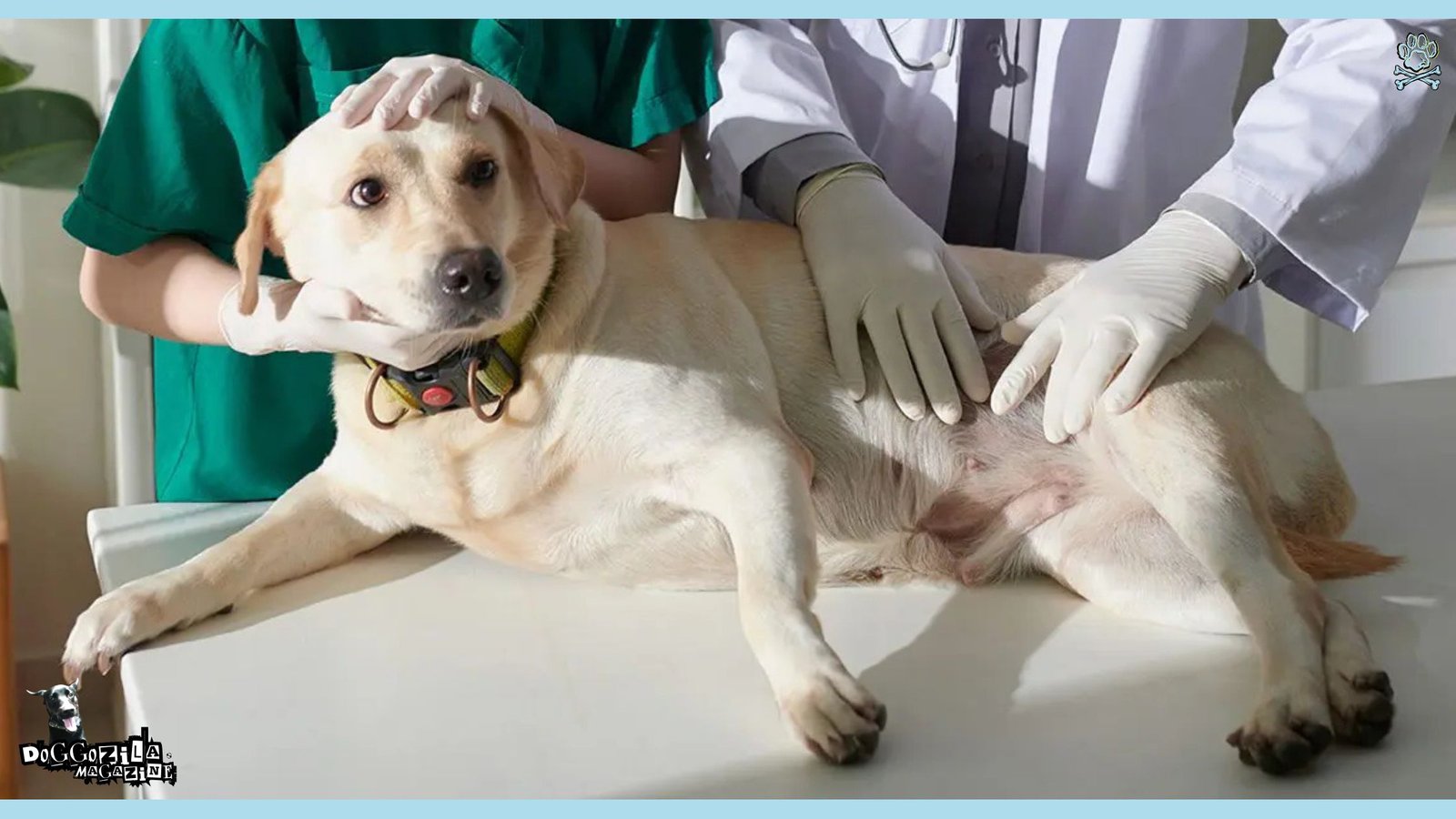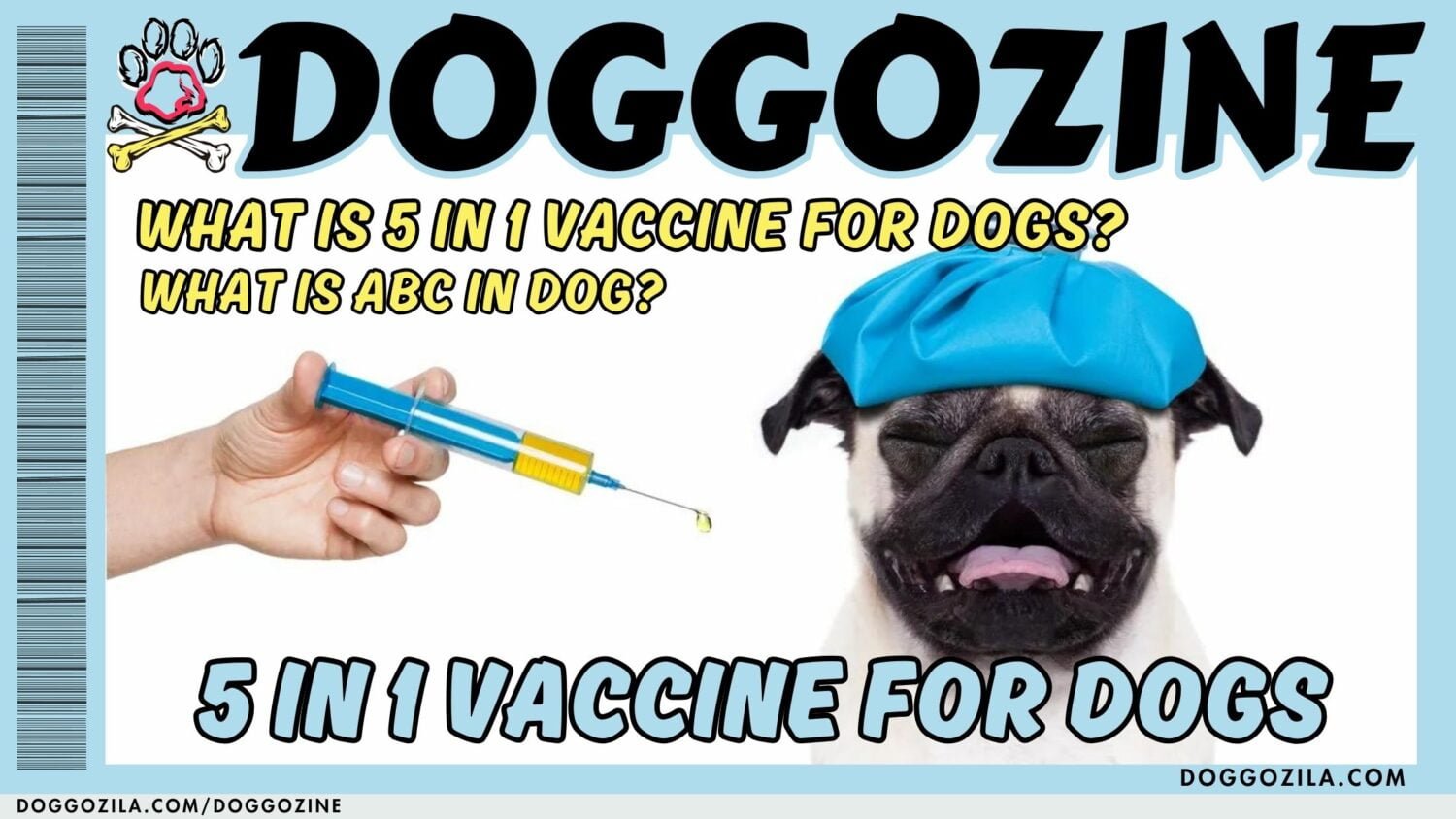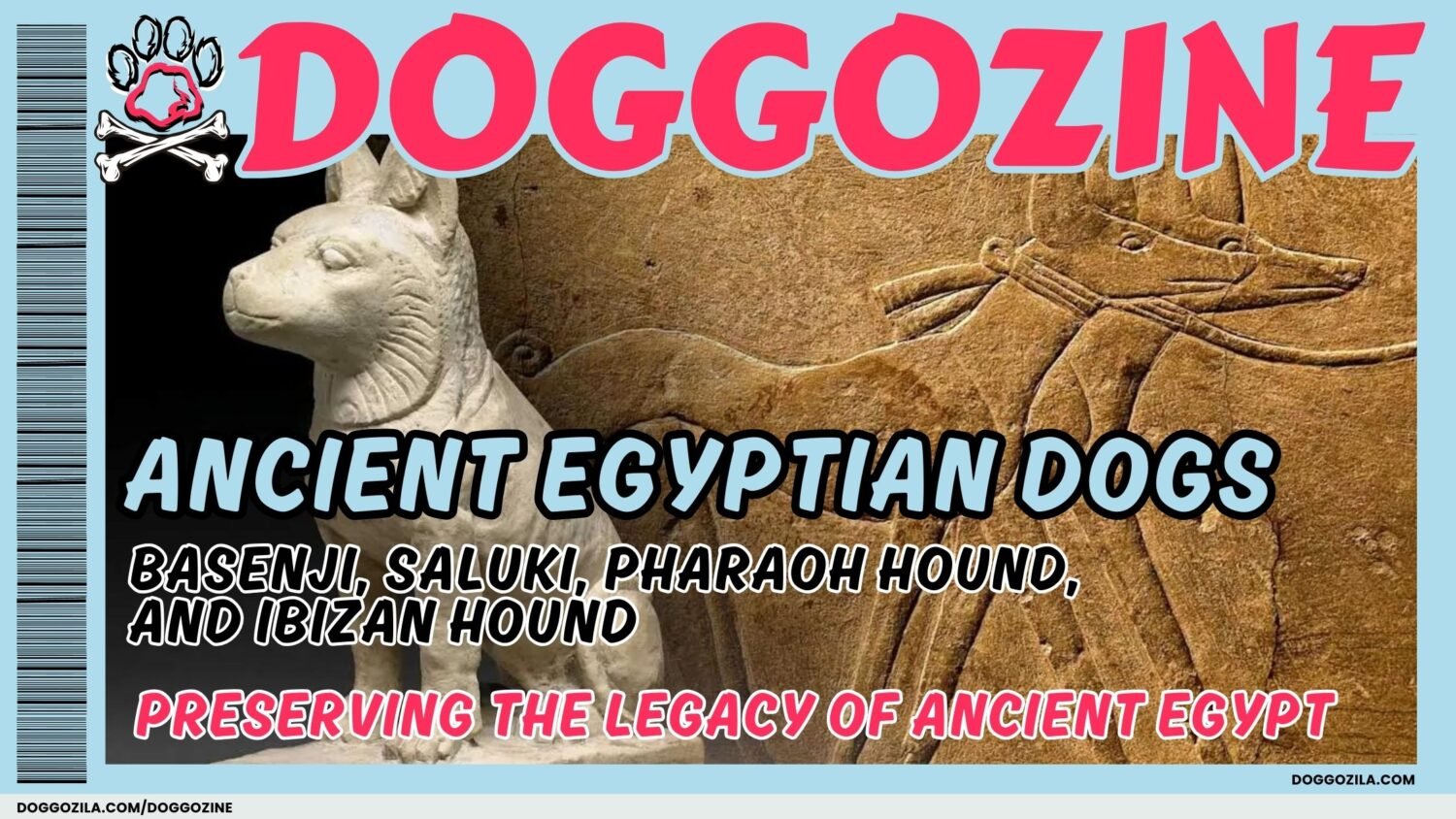Every dog owner’s worst nightmare is seeing their beloved pet suddenly collapse with a swollen, painful abdomen. Gastric dilatation-volvulus (GDV), commonly called bloat, is a true medical emergency that can kill a healthy dog within hours. Gastropexy in dogs is a potentially life-saving surgical procedure that prevents this deadly condition by securing the stomach to the body wall.
This comprehensive guide will walk you through everything you need to know about this preventive surgery – from which breeds need it most to what recovery looks like.

UNDERSTANDING GDV: WHY GASTROPEXY IN DOGS SAVES LIVES
Before considering gastropexy in dogs, it’s crucial to understand the deadly condition it prevents. GDV occurs when a dog’s stomach fills with gas and twists on itself, cutting off blood flow to vital organs. This creates a cascading medical emergency that’s fatal without immediate treatment. The stomach twist (volvulus) is the true killer – even if gas is relieved, the torsion causes tissue death and systemic shock.
The Deadly Mechanics of Bloat
When gastropexy in dogs isn’t performed, GDV progresses through horrifying stages. First, the stomach distends with gas from fermentation or swallowed air. As pressure builds, the heavy stomach can rotate 180-360 degrees, pinching off blood vessels and the digestive tract’s openings. This traps the gas, creating a vicious cycle of increasing pressure.
The spleen often gets caught in the twist too. Within hours, blood flow is compromised to such a degree that stomach tissue dies, toxins flood the bloodstream, and the heart struggles to circulate what little oxygen remains. Even with emergency treatment, mortality rates reach 30-50%.
Breeds at Highest Risk
While any dog can bloat, deep-chested breeds are most vulnerable, making gastropexy in dogs especially important for them. Great Danes top the risk list with a 42% lifetime chance of GDV. Other high-risk breeds include: Standard Poodles, German Shepherds, Dobermans, Weimaraners, Irish Setters, and Saint Bernards.
Research shows risk increases with age, lean body type, and having a first-degree relative who bloated. Dogs weighing over 100 pounds have nearly a 20% GDV risk. Even some smaller deep-chested dogs like Basset Hounds benefit from preventive gastropexy.
How Gastropexy Works to Prevent Tragedy
Gastropexy in dogs creates permanent adhesion between the stomach wall and body cavity, preventing the dangerous twisting action of GDV. While the stomach can still distend with gas (requiring still urgent care), it cannot rotate to the life-threatening volvulus stage.
Think of it like anchoring a tent – high winds might make the fabric billow, but the stakes prevent it from blowing away entirely. The procedure is typically done laparoscopically today, creating strong scar tissue bonds that last the dog’s lifetime. It’s the difference between a treatable stomach upset and a race against the clock to save your pet’s life.
🔑 Key Points: Gastric dilatation-volvulus (GDV), commonly called bloat, is a true medical emergency that can kill a healthy dog within hours.

TYPES OF GASTROPEXY IN DOGS: CHOOSING THE RIGHT PROCEDURE
Not all gastropexy in dogs procedures are created equal. Surgical techniques have evolved significantly, offering options tailored to different situations. Understanding these variations helps owners make informed decisions with their veterinarians.
Incisional Gastropexy in Dogs: The Gold Standard
The most common and studied gastropexy in dogs technique involves surgically creating an incision in the stomach wall and body muscle, then suturing the raw edges together. As these heal, strong scar tissue forms a permanent bond. Typically performed through a 3-4 inch abdominal incision, this method has a 95-98% success rate in preventing volvulus.
It’s often done during spay/neuter for convenience, but can be performed as a standalone procedure. The main advantage is proven reliability – veterinary studies tracking thousands of cases show near-perfect prevention of stomach twisting when properly performed.
Laparoscopic Gastropexy in Dogs: Minimally Invasive Option
For gastropexy in dogs, laparoscopic (keyhole) techniques offer faster recovery with equal effectiveness. Using 2-3 tiny incisions and a camera-guided approach, surgeons create the same stomach-to-wall adhesion with significantly less trauma. This is ideal for giant breed puppies being fixed before full growth, as it avoids large abdominal incisions during development.
Most dogs go home the same day and resume normal activity within a week. While more expensive initially, the reduced complications and faster return to function often make it cost-effective for large breeds prone to post-surgical issues. Studies show equal effectiveness to open techniques when performed by experienced surgeons.
Belt-Loop Gastropexy in Dogs: An Alternative Approach
This gastropexy in dogs variation creates a “belt” of stomach wall that’s pulled through a slit in the abdominal muscle and sutured back on itself. While slightly faster to perform, it has fallen out of favor somewhat due to higher failure rates (around 5-7% in long-term studies).
However, it remains useful in certain emergency GDV surgeries where speed is critical. Some surgeons combine it with incisional methods for added security. The main advantage is technical simplicity in difficult situations, but it’s generally not recommended for preventive cases where other options exist.
Circumcostal Gastropexy in Dogs: The Heavy-Duty Solution
Reserved for the largest giant breeds, this gastropexy in dogs technique actually sutures the stomach to a rib for maximum security. The approach is more invasive but creates arguably the strongest possible attachment point.
It’s particularly favored for Great Danes and Mastiffs over 150 pounds, where standard methods may not provide sufficient support.
Recovery is longer (2-3 weeks of strict rest), but the peace of mind for owners of these gentle giants is often worth it. Veterinary teaching hospitals typically report zero failures with this method in properly selected cases.
🔑 Key Points: Understanding these variations helps owners make informed decisions with their veterinarians.

THE IDEAL TIMING FOR GASTROPEXY IN DOGS
When to schedule gastropexy in dogs involves balancing multiple factors – age, size, and planned sterilization. Strategic timing maximizes benefits while minimizing risks and costs.
Combining with Spay/Neuter: The Convenience Factor
For many owners, performing gastropexy in dogs during routine sterilization makes perfect sense. This “two-for-one” approach means only one anesthetic event and recovery period. Most veterinarians recommend this timing for large breeds being fixed around 6-12 months old.
The stomach is sufficiently developed for the procedure while still allowing the dog to benefit from decades of protection. Studies show no increased complication rates when combining the surgeries in healthy dogs. This is often the most cost-effective approach as well, since you’re already paying for anesthesia and facility fees.
Standalone Gastropexy in Dogs: When to Go Solo
Some situations call for gastropexy in dogs as a separate procedure. Dogs already sterilized obviously need this approach, as do those being kept intact for breeding or showing. Many giant breed owners wait until 18-24 months when growth plates have closed, especially if concerned about anesthesia risks in younger giants.
Emergency gastropexy after a GDV episode (where the stomach is untwisted but needs securing) also falls into this category. While requiring its own anesthetic event, standalone procedures allow perfect timing for the individual dog’s needs without being tied to sterilization schedules.
The “Early Bird” Approach for High-Risk Breeds
Some Great Dane and Mastiff breeders advocate very early gastropexy in dogs at 4-6 months old, especially in lines with strong GDV history. The rationale is preventing even the first potential bloat episode in these ultra-high-risk dogs. Laparoscopic techniques make this feasible despite the puppies’ size.
While controversial (some argue the stomach hasn’t reached final position yet), proponents point to success in European practices where early gastropexy is routine. This remains a case-by-case decision requiring thorough vet consultation.
Age Limits: It’s Never Too Late (Almost)
While gastropexy in dogs is ideally performed young, older at-risk dogs can still benefit. Healthy seniors up to 8-10 years old routinely undergo preventive gastropexy with excellent outcomes. The key is thorough pre-anesthetic testing (bloodwork, EKG, possibly chest X-rays) to ensure safe anesthesia.
For dogs with existing conditions, laparoscopic methods may be preferred to minimize stress. Even dogs who’ve had one non-fatal bloat episode can get gastropexy to prevent recurrence (with about 85% success rate according to veterinary studies). The adage “better late than never” truly applies here.
🔑 Key Points: When to schedule gastropexy in dogs involves balancing multiple factors – age, size, and planned sterilization.

THE GASTROPEXY PROCEDURE IN DOGS: WHAT TO EXPECT STEP-BY-STEP
Understanding exactly what happens during gastropexy in dogs helps owners prepare and make informed decisions. While techniques vary slightly, the core process remains consistent.
Pre-Surgical Preparation
About 12 hours before gastropexy in dogs, food is withheld (water usually allowed until a few hours prior) to ensure an empty stomach. Pre-anesthetic bloodwork checks organ function and screens for hidden issues. Many vets administer IV fluids starting beforehand to support blood pressure during anesthesia.
Some high-risk breeds get additional cardiac screening. Owners typically sign consent forms detailing the specific gastropexy method and any additional procedures being performed simultaneously.
Anesthesia and Monitoring
Modern gastropexy in dogs uses balanced anesthetic protocols tailored to breed and size. After sedation, an endotracheal tube secures the airway while gas anesthesia maintains unconsciousness. Dedicated veterinary technicians monitor heart rate, oxygen levels, blood pressure, and temperature throughout.
Giant breeds often receive additional warming support and careful positioning to prevent nerve damage. Most practices use advanced monitoring equipment equivalent to human hospitals. The actual surgical time ranges from 20 minutes (laparoscopic) to 60 minutes (open with spay/neuter).
The Surgical Process Itself
For open gastropexy in dogs, the surgeon makes an abdominal incision near the last rib. The stomach is located and a 2-3 inch section of its outer wall is sutured to the interior abdominal muscle layer. In laparoscopic methods, tiny instruments pass through ports to create the same attachment using special staples or sutures.
The surgeon verifies proper stomach positioning and checks for any bleeding before closing. Many practices take before/after photos to show owners the secure attachment point. Combined procedures (like spay/neuter) are completed during the same anesthetic event.
Immediate Post-Op Recovery
After gastropexy in dogs, patients are carefully monitored as anesthesia wears off. Pain medications (often a combination of injectables and oral to-go meds) keep them comfortable. Most dogs go home the same day with an e-collar to prevent licking.
Incision sites are typically covered with surgical glue rather than external stitches. Laparoscopic patients often recover remarkably fast – some are begging for dinner that evening! Vets provide detailed instructions on activity restriction, incision care, and warning signs to watch for during the critical first 72 hours.
🔑 Key Points: Understanding exactly what happens during gastropexy in dogs helps owners prepare and make informed decisions.

RECOVERY AND AFTERCARE: ENSURING SUCCESS
The days and weeks following gastropexy in dogs are crucial for proper healing and long-term effectiveness. While the procedure itself is relatively straightforward, attentive aftercare makes all the difference.
The First 72 Hours: Critical Monitoring
Immediately after gastropexy in dogs, owners should expect some grogginess from lingering anesthesia effects. Small, frequent water offerings prevent nausea, with food reintroduced gradually the next day. Incision sites must stay dry and clean – no bathing or swimming for 10-14 days.
The most concerning signs are persistent vomiting, pale gums, or abdominal distension (ironically, symptoms of GDV – call your vet immediately if these appear). Most dogs receive pain medication for 3-5 days, though laparoscopic patients often need less. Restrict activity to short leash walks only, as jumping or rough play could disrupt healing.
The Two-Week Healing Window
By day 3-5 post gastropexy in dogs, most patients feel surprisingly good – which becomes the danger period. Feeling normal tempts them (and owners) to resume activity too soon. The forming scar tissue needs 10-14 days to develop sufficient strength. Continue leash walks only, using a harness instead of neck collar for large breeds.
Prevent access to stairs or furniture they might jump on. Some vets recommend abdominal support wraps for giant breeds during this phase. Incisions should be checked daily for redness, swelling or discharge – though some mild firmness along the suture line is normal scar formation.
Long-Term Considerations
While gastropexy in dogs significantly reduces GDV risk, it’s not 100% foolproof. Owners should still know bloat symptoms (unproductive retching, distended abdomen, restlessness) as gas distension without twisting can still occur. Feeding multiple small meals from elevated bowls and avoiding vigorous exercise around mealtimes remains wise.
Annual vet checks should include feeling for the gastropexy “button” (the palpable scar adhesion) to confirm it remains intact. Some performance dogs may need veterinary clearance before returning to high-impact sports. With proper care, the gastropexy should provide lifelong protection.
🔑 Key Points: The days and weeks following gastropexy in dogs are crucial for proper healing and long-term effectiveness.

COST ANALYSIS: IS GASTROPEXY IN DOGS WORTH THE INVESTMENT?
The financial aspect of gastropexy in dogs gives many owners pause, but context is crucial. When weighed against emergency GDV treatment costs and the priceless value of prevention, it’s often a wise investment.
Price Ranges by Procedure Type
Costs for gastropexy in dogs vary widely by region, facility type, and dog size. Standalone open gastropexy typically runs 800−800−1,500 at general practices. Laparoscopic methods range 1,500−1,500−3,000 at specialty centers. When combined with spay/neuter, the added cost is usually 300−300−800 over the sterilization alone.
Circumcostal techniques at veterinary teaching hospitals may reach 2,500−2,500−4,000. Geographic differences are significant – urban coastal areas often charge 30-50% more than rural Midwest practices. Always get detailed estimates upfront, including all anticipated ancillary costs (pre-op bloodwork, medications, etc.).
Comparing to Emergency GDV Treatment
The alternative to preventive gastropexy in dogs – emergency GDV surgery – typically costs 3,000−3,000−8,000 with no guarantee of survival. Even with pet insurance (which often covers 70-90% after deductible), the out-of-pocket expense usually exceeds preventive gastropexy costs.
Non-surgical GDV treatment (stomach decompression and stabilization) still averages 1,500−1,500−3,000 and merely delays the inevitable recurrence. Financially, gastropexy is like buying insurance before the disaster strikes – statistically smarter than gambling on avoidance.
Pet Insurance Considerations
Most pet insurance plans classify gastropexy in dogs as a preventive procedure when done electively, meaning it’s typically not covered. However, many will cover it if performed during emergency GDV treatment (after the deductible). Some premium plans offer wellness riders that partially reimburse preventive gastropexy.
Pre-existing conditions related to GDV risk (like a prior bloat episode) may be excluded. The key is enrolling in insurance before any GDV concerns arise – ideally when the dog is young and healthy. For owners without insurance, many veterinary practices offer payment plans for preventive procedures.
🔑 Key Points: The financial aspect of gastropexy in dogs gives many owners pause, but context is crucial. When weighed against emergency GDV treatment costs and the priceless value of prevention, it’s often a wise investment.

REAL-LIFE SUCCESS STORIES: GASTROPEXY IN DOGS
Nothing illustrates the value of gastropexy in dogs better than real-world examples. These cases demonstrate how this procedure has saved countless dogs from a painful, preventable death.
The Great Dane Who Cheated Death Twice
A 5-year-old Dane named Zeus underwent emergency GDV surgery at 3 years old. His stomach was untwisted but no gastropexy was performed. Two years later, he bloated again – this time with 75% stomach necrosis before reaching the ER.
The veterinary team performed heroic surgery including gastropexy, and against all odds, Zeus survived. His case became a teaching example for always doing gastropexy during initial GDV treatment. Today at 8 years old, he’s never had another episode thanks to that crucial second surgery.
The Hunting Dog Who Kept Working
A field trial Labrador named Buck received laparoscopic gastropexy in dogs at 18 months during a routine neuter. His owner, initially skeptical, became a believer when Buck later developed extreme gastric dilatation after scavenging spoiled meat.
While still requiring emergency care for the gas distension, the gastropexy prevented twisting – the difference between a 1,200 vetbillandpotential 1,200 vetbillandpotential 6,000 surgery (or worse). Buck returned to competition two weeks later and continues hunting at age 9 with no further incidents.
The Show Line Prevention Protocol
A renowned Great Dane breeder began performing early laparoscopic gastropexy in dogs on all puppies at 6 months old. Over 10 years and 87 dogs, not a single case of GDV occurred in her line – compared to 7 GDV episodes (3 fatal) in previous generations.
Her protocol has been adopted by multiple national breed clubs as a responsible breeding practice. The data clearly shows gastropexy’s preventive power when implemented consistently.
The Senior Dog Second Chance
A 9-year-old Weimaraner named Silver had survived two mild GDV episodes with medical management. Her owners finally opted for gastropexy in dogs after the second scare. The surgery (performed laparoscopically) went smoothly despite her age.
Silver lived to 13 without another bloat episode, proving it’s never too late for preventive action. Her case highlights how gastropexy can extend quality life even in older at-risk dogs.
Final Thoughts About Gastropexy in Dogs
Gastropexy in dogs represents one of veterinary medicine’s most impactful preventive breakthroughs. For at-risk breeds, this single procedure can mean the difference between a full lifespan and sudden tragedy. While the decision requires careful consideration of individual factors, the overwhelming evidence supports its value.
Consult your veterinarian about your dog’s specific risk profile and the best timing/method for their situation. Remember – you can’t predict bloat, but you can absolutely prevent its deadliest consequence. That peace of mind is priceless for any dog owner.
We recommend to read more about the dangers of bloat in dogs!









